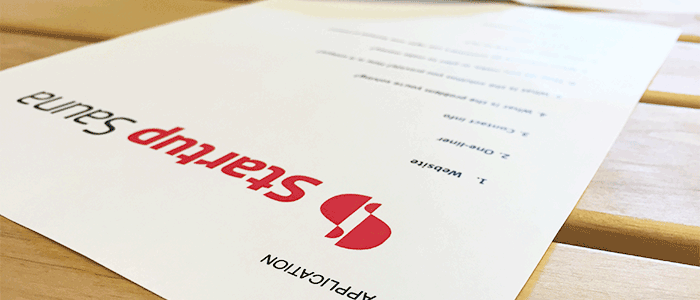At Startup Sauna we go through almost a thousand applications for our events and program each year. Most of them are badly, and we mean really badly, written but face-to-face some of the companies behind them show amazing potential.
The purpose of your application is to get someone interested enough to want to learn more. Coincidentally, your pitch has the same objectives. Check out our blog post on making your pitch better to get the contents of your application in order. Having content is just the beginning, however, as there are other factors when it comes to evaluating your application..
The Ugly Truth (according to YouTube ads): The attention span of man in the 21st century has been reduced to roughly 5 seconds.
This means that first impressions count. Any evaluator will do a cursory check of your application before committing to reading it through in detail. Therefore, it’s your job to make sure it impresses the evaluator from first glance to final word.
Make your application a sure shot instead of rolling the dice. Check out our 3 tips’n’tricks for writing a startup application that will punch through mediocrity.
#1 Make it read like an effective e-mail
According to Mårten Mickos’ an effective email, ”[An application] …immediately has to state what it is trying to achieve … and only then do you go into details…”. For Startup Sauna, a good application should read like an effective email.
Usually applications to startup accelerators or events are divided into sections, as in ”What is the problem you’re solving?” or ”What have you done so far?” Make your answers like e-mail by starting each section with a sentence that summarizes your answer in a clear and effective fashion, and only then go into a more detailed answer.
How to implement: Summarize your answer in the first sentence and make it pop out.
Just like any essay paragraph, summarize the contents of each section’s answer in the first sentence. Make that sentence readable in a glance by separating it from the body of text. Explain your answer in more depth and length in the body of text itself.
#2 When in doubt, use videos and your website
Most likely, your application will leave the evaluator at least slightly confused about your business. When in doubt, the evaluator turns to the resources you’ve provided, namely any videos, website links, one-pagers or pitch decks you may have attached to your application.
First of all, make sure ALL the resources are in clear English. Nothing ruins a great first date with your startup faster than a website with strange glyphs instead of plain old English. At the very least, provide English localization for the critical parts of your website, like the landing page. Same goes for any videos; have a version with English subtitles if it’s recorded in your native language.
Even if you wrote your application in a hurry, a well designed website will positively impress any evaluator and help them understand your business. For those evaluators that need a bit of hand-holding, you can provide a thought out product video that leaves no questions to be asked.
How to implement: Get a beautiful website and a clear product video, make sure they are understandable, and in English.
#3 Know when to stop
Nothing disheartens a person assigned with evaluating dozens of applications than the wall-of-text. If your application doesn’t look clear and effective, it sure as hell won’t be clear and effective.
Brevity is key in these situations. Write concise, yet comprehensive answers and you’re not wasting the time of the person reading your application. Remember that your application doesn’t need to go over every little detail in your go-to-market strategy or business model. Set a suitable scope and stick with it.
How to implement: Make your answers long enough to make your point, but short enough to keep the reader’s interest.


